I tested Fibonacci Trading Strategy 100 TIMES to find the truth about Fibonacci Retracements
Does Fibonacci trading strategy even work? Should you trade using the Fibonacci retracement tool? I have tested many strategies on the Trading Rush channel, and almost every other day, there is a comment about testing the Fibonacci trading strategy or to give my thoughts on it. Until now, I have avoided making a video about the Fibonacci trading strategy, because the idea of Fibonacci in trading sounds really stupid. But that’s my personal preference, and as you know, on the Trading Rush channel, we keep personal preferences aside and only talk with the real world data. In this video I’ve tested the Fibonacci retracement tool 100 times to see if it works or not, but unlike other indicators we have tested on the Trading Rush channel, Fibonacci can’t be backtested. Let me explain.
You see, there are many people who believe that the fibonacci tool is really good for trading, but then there are traders who believe that fibonacci levels are just some useless lines on a chart. Now remember, almost 90 percent of retail traders lose money in trading. So instead of believing other people, let’s look at the real data and understand how fibonacci actually works.
Fibonacci was a medieval mathematician, and came up with a sequence that goes something like this. 1+1=2, 2+1=3, 3+2=5, 5+3=8, and so on. Here, each new number is sum of the 2 numbers before it.
Now, if you take any number from this sequence, and divide it with the next number, you will get a value of 0.618.
If you divide any number with every other number on this sequence, you will get the value of 0.382.
And if you divide any number with 3rd number next to it, you will get a value of 0.236. Furthermore, if you divide 1 and 2, you will get a value of 0.5.
You probably noticed that these are the same numbers you will find on a fibonacci tool. On many charting platforms, these numbers are turned into percentages. So the 0.382 becomes 38.2 percent. 0.618 becomes 61.8 percent, and so on.
These fibonacci numbers are found almost everywhere in the nature. From the shape of the galaxy to the number of petals on a flower. Since the fibonacci is found almost everywhere in the nature, many traders believe that fibonacci can also be applied in trading.
So, people started applying the fibonacci tool when the charting platforms provided.
It is widely believed, that since price doesn’t go in the straight line in one direction, when the price is in a trend, the price will retrace at the fibonacci level, hence the name fibonacci retracement tool.
So in an uptrend, if you take the fibonacci tool from the swing low to the swing high, it is said that the price has a higher probability of reversing near the fibonacci levels. Some traders like to give higher importance to the 50, 61.8 and 38.2 levels.
Now here’s a big problem, unlike other indicators who actually take real market data to calculate their values, fibonacci draws levels that have almost no relation to the actual market data. Many fibonacci fan boys will buy stock or a forex pair because the number of petals on a flower or the shape of the snail’s shell is based on the fibonacci.
For example, the V WAP tool that I have recommended many times on this channel, takes the real volume traded on a stock to calculate it’s value, fibonacci doesn’t do anything similar to that.
One might say, that fibonacci does take market data like the swing low and swing high into consideration. Well yes, but that’s actually a problem.
You see fibonacci numbers have almost no real useful value in Trading. It has great importance outside of the financial markets. The only reason why fibonacci works, is because people believe it works. If enough people believe that the 50 percent retracement level works as a reversal point, many people will enter trade near that level, which will make the price go in the desired direction.
The reason why normal strong support and resistance levels work so great, is because almost everyone is going to see them at the same price.
But in trading where every trader looks at the swing low and swing high differently, the fibonacci value is not going to be at the exact same level. Furthermore, fibonacci has so many levels that some traders can get confused about which level is giving the real reversal sign, in other words, from what level is the price reacting. This makes fibonacci trading really inefficient when compared to other trading tools like the V WAP indicator.
Furthermore, backtesting the fibonacci tool can be really difficult because fibonacci requires you to draw from the swing low to the swing high and vice versa. When you try to backtest, this swing low and swing high will become very biased.
In the other trading strategies I have tested 100 times on the Trading Rush channel, I took trades by looking at the indicators and not the price itself, and since non repainting indicators look exactly the same on live markets and while backtesting, the backtesting data was unbiased.
Now, one can recommend using the zig zag indicator while backtesting the fibonacci levels. This way, you won’t have to think about the swing low and swing high while backtesting. And That’s what I did. Since many traders believe that most of the time price retraces near the 50 fibonacci level, I tested the fibonacci trading strategy 100 times to find the truth.
Although the zig zag indicator was able to show proper swing lows and swing highs most of the time, it is not a perfect indicator. Some swing lows and swing highs according to the zig zag indicator were not accurate, but since swings of a trend can differ from trader to trader, this small number of less accurate swings were fine. And when the zig zag lines were looking like a mess, no swings of a trend were considered while backtesting.
Since price does not react at the fibonacci levels exactly, I only considered a fibonacci level if price had reversed near it. By near I mean, if price reversed from 5 percent above or 5 percent below it.
Since fibonacci is mostly used in a trending market, I used the 200 period moving average to find the trend. When most part of the swing low and swing high was on the one side of the moving average, I consider the fibonacci level. Furthermore, in an uptrend, the swing high has to be higher than the previous swing high. Similarly in a downtrend, the swing low has to be lower than the previous swing low.
So after backtesting the fibonacci tool 100 times, here’s what I found out. Only 6 percent of the time price reacted near the 23.6 level. 18 percent of the time near the 38.2 level. 14 percent of the time near the 50 level. 15 percent of the time near the 61.8 level. 14 percent of the time near the 78.6 level. And 33 percent of the time price either reacted from the 100 level or went straight through all the fibonacci levels. That make sense since price is in a range most of the time, but one thing to consider from this data, is that except from the 23.6 level, price reacted from all other levels the same way. That is not a good thing. In an uptrend, since the price is going to reverse with a higher swing low anyway, and since there is no significant difference between the levels, one can say that the fibonacci levels hold almost no significant value in trading, especially when compared with other things like normal support and resistance.
The only reason people think fibonacci works in trading, is because they believe it works.
One can argue that this data was not enough to be judged on. Maybe, but after testing many different trading strategies 100 times on the Trading Rush channel, and taking virtual trades 10000 times to see how close are we to the actual win rates, we have seen that the strategies that actually perform good, give very good profit numbers after backtesting only 100 times. For example, popular trading strategies like the MACD, Ichimoku cloud, bollinger bands, that are trusted and used by many professional traders, gave very good win rates after we backtested them 100 times.
It will take many months to take 100 trades for many traders in live markets anyway. The question is, will you keep using a strategy that doesn’t make profit even after multiple months, when there are strategies that have the potential to make almost 50 percent in the same time period. Most probably won’t use a strategy that keeps them in a loss in the long term.
If you want to see the best trading strategies that performed really well, you should check out other trading videos on the Trading Rush channel.
That’s all. Now you know a little bit more about fibonacci trading. Like the video if you liked it. Subscribe to the Trading Rush channel and ring that notification bell to see more trading strategies tested 100 times. Check out the Trading Rush app using the link in the description. Maybe consider supporting the channel on Patreon. Thanks a lot.

